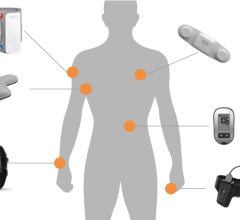December 22, 2010 – Thanks to advances in space technology, an iPhone will soon be able to do double-duty, keeping people in tune with their favorite music and their vital signs while they go for a jog.
With the support of European Space Agency’s Technology Transfer Program (ESA TTP), Swiss company CSEM created the final prototype for its Pulsear device this year. A tiny unit embedded in a regular earphone uses infrared signals to see how fast the listener’s heart is beating. It sends infrared signals through the tissues in the ear. A tiny photo diode records the results and sends the information via the earphone wires to a device that plugs into the phone. The result is an accurate reading of the user’s heart rate, without the irritation of wearing a chest belt.
“Lots of people listen to music while they exercise and lots of people find the belts uncomfortable, so we thought it made sense to measure heart rate through the ear,” said CSEM’s Dr. Andrea Ridolfi.
Earlier attempts by CSEM to monitor heart rate using earphones were not satisfactory, said Ridolfi, because the available technology was not sophisticated enough. But that was before CSEM developed a complex chest sensor for measuring astronauts’ blood oxygen levels for ESA’s Long Term Medical Survey system. “Once we were done, we said, ‘let’s recycle this.’” Ridolfi said.
With a grant from the ESA TTP’s ‘Technology Transfer Demonstrator’ initiative, CSEM created the prototype. The initiative supports development of new hardware and software to bridge the gap between the space technology and its terrestrial use.
An iPhone application shows the owner’s heart rate over time onscreen and can compare it to jogs from the week before. Subjects who tested the app during their fitness training rated the device highly. While the current prototype measures only heart rate, future versions could easily be adapted to measure additional vital signs, such as blood oxygen levels. This would open up a number of medical applications.
“Technology transfer from space has a huge potential to spur innovation in areas you wouldn’t expect to find space-tech,” explains Frank M. Salzgeber, head of ESA TTP. “ESA TTP wants to help European industry to apply sophisticated space solutions to their markets.”
More information: www.esa.int/ttp


 September 16, 2025
September 16, 2025 









